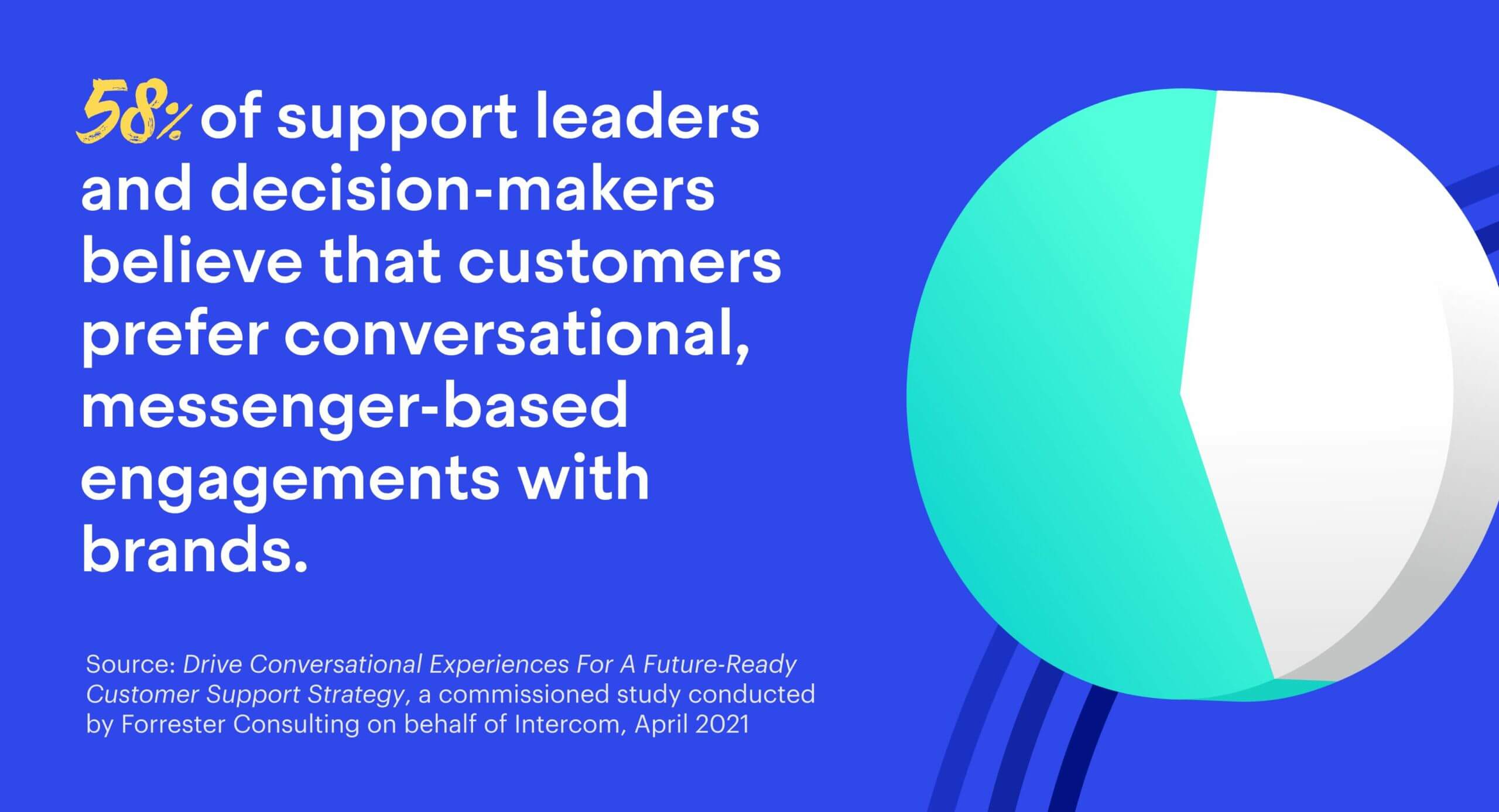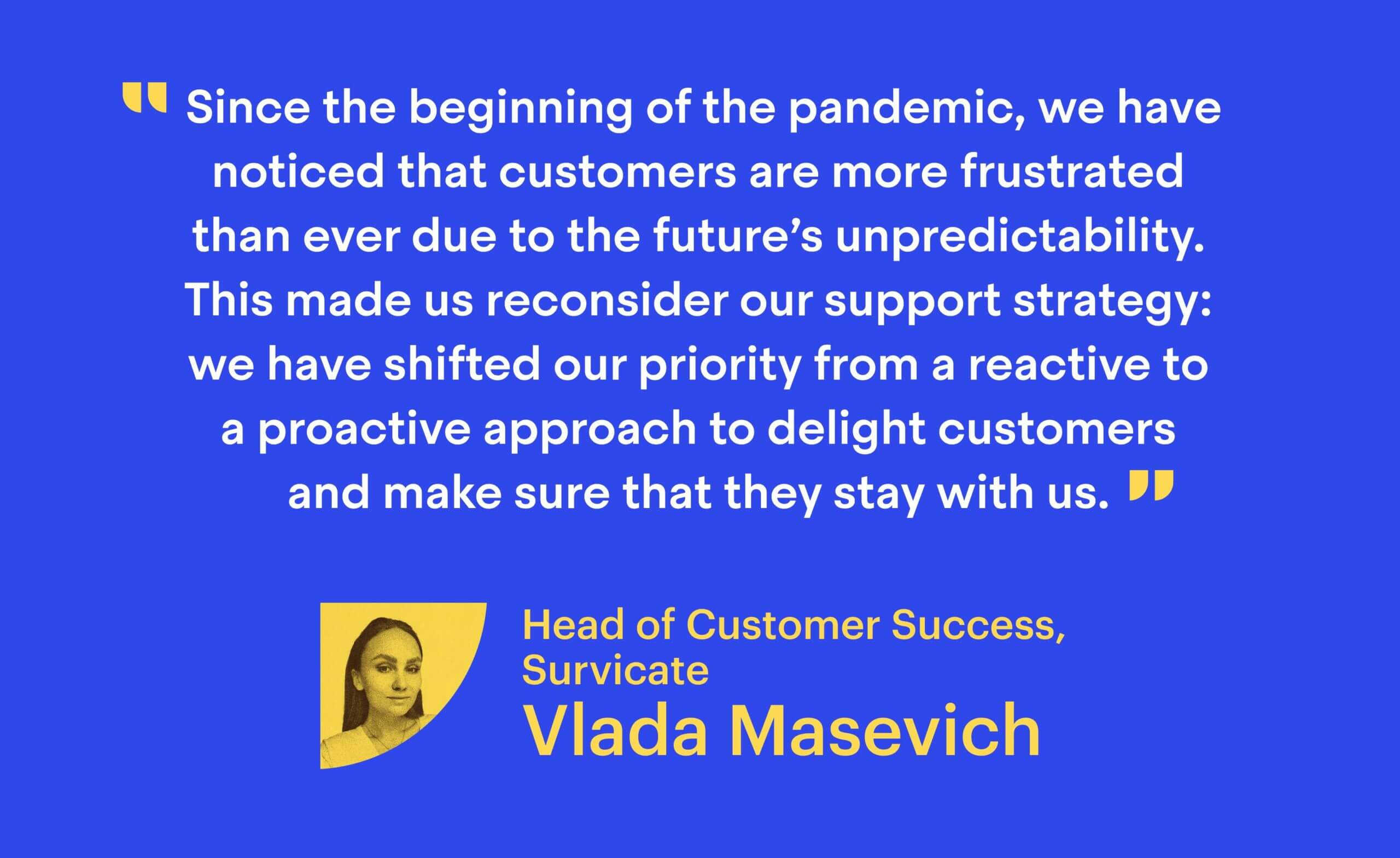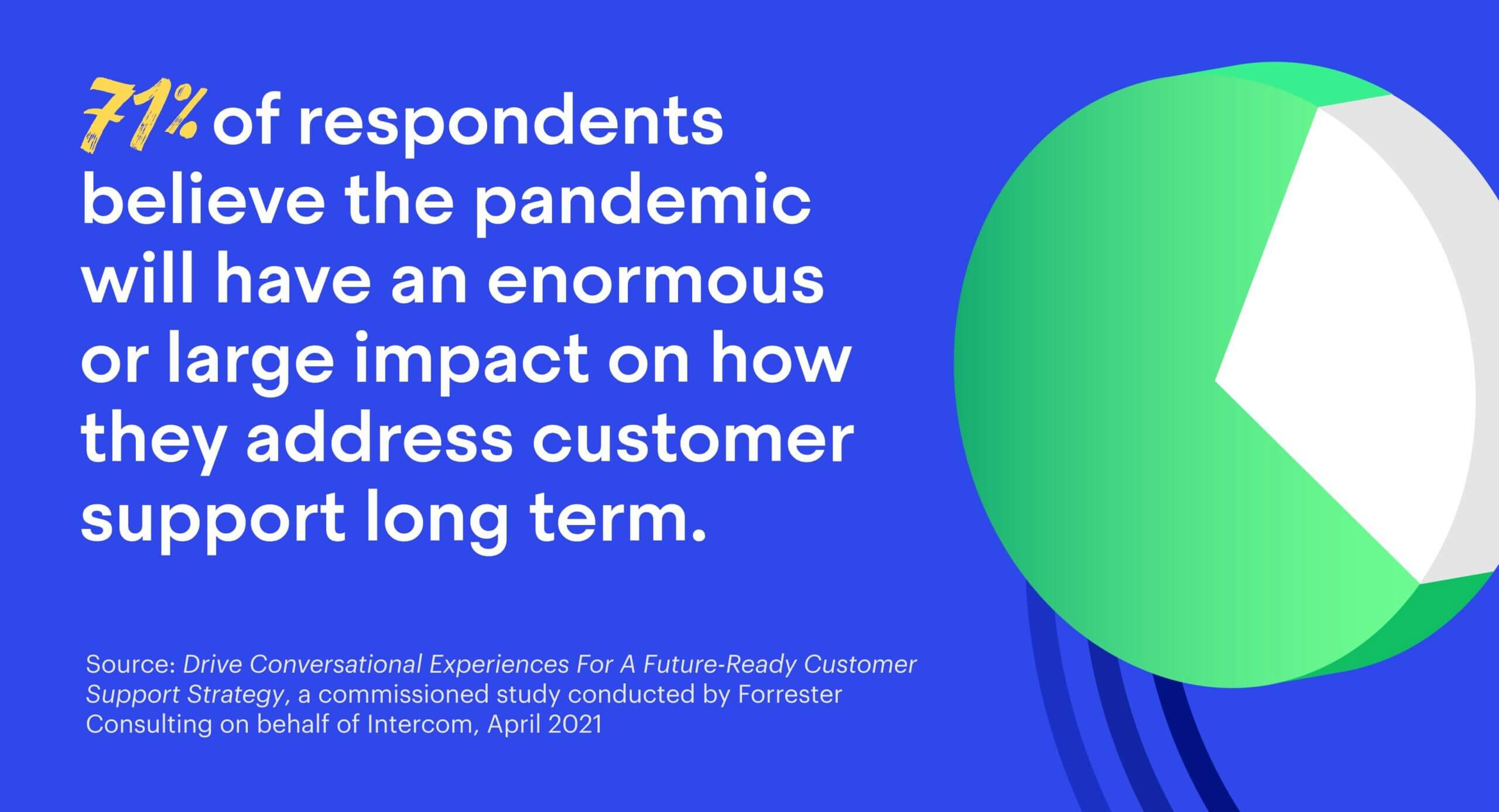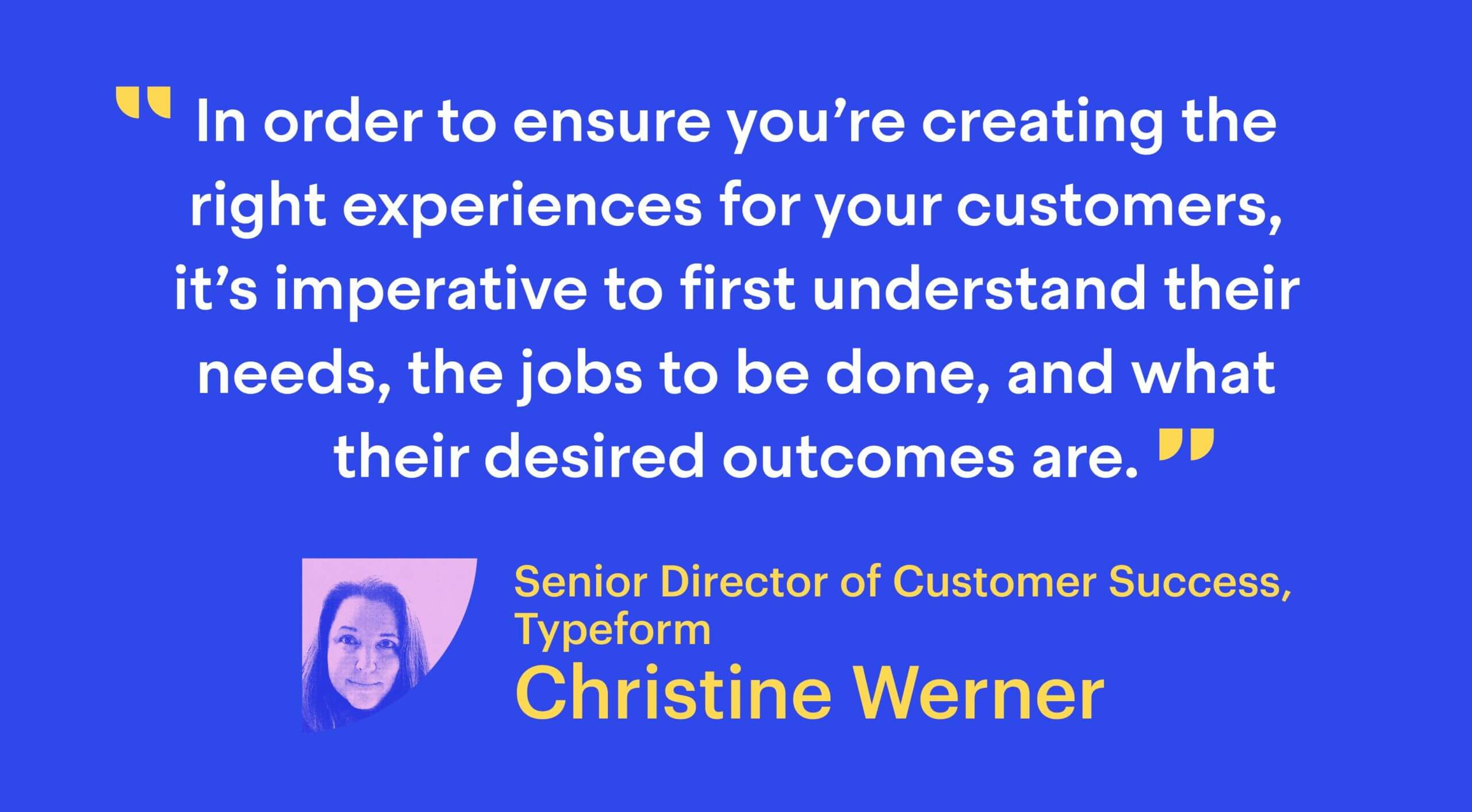
How the pandemic has changed customer support forever
The COVID-19 pandemic has had an irreversible impact on how the world does business.
Over the last year, companies have had to pivot to digital-first ways of working overnight; supply chains and distribution facilities worldwide have been majorly disrupted; and, in the midst of all this uncertainty, consumers have (understandably) been more anxious and frustrated than ever.
In the wake of these unprecedented changes and challenges, the way that companies and consumers interact with each other – and forge relationships – has also undergone a transformation. The channels we use to communicate have shifted dramatically, and customer expectations for fast, personalized support are higher than ever. As a result, companies need to understand their customers and deliver to their high standards if they want to stay competitive.
“How can you ensure that your support team is still providing personable, conversational support at scale?”
So as customer support becomes increasingly digital-first, how can you ensure that your support team is still providing personable, conversational support at scale? And as support leaders and decision makers, how should you navigate this transition to set your team, organization, and customers up for long-term success?
We commissioned Forrester Consulting, an independent research firm, to dig deeper into these questions and explore how conversational experiences are fuelling customer retention and business growth for major companies. In April 2021, they surveyed over 500 global customer support decision makers – executives, vice presidents, directors, and managers – across EMEA and the United States, to learn more about the changes they’ve seen, and how they’re future-proofing their customer support strategy with conversational support.
The resulting study, Drive Conversational Experiences for a Future-Ready Customer Support Strategy, found that:
- Messenger-based support is now the second most used support channel.
- 53% of support teams have seen an increase in support queries since COVID-19 hit.
- 71% of support leaders and decision makers believe the pandemic will have an enormous or large impact on how they address customer support long term.
Here’s what survey respondents and industry leaders have to say about the irreversible changes to customer support – and how you can use these insights to future-proof your team.
This is the first post in our series exploring the findings from Drive Conversational Experiences for a Future-Ready Customer Support Strategy, a commissioned study conducted by Forrester Consulting on behalf of Intercom in April 2021. You can read the other posts in this series here.
Messaging is rapidly becoming a key channel for customer support
One of the biggest shifts we’re seeing is in how customers want to communicate with support teams. According to Forrester’s research, prior to the pandemic, messaging was ranked fifth overall in terms of channel usage. Now, it’s second.
Not only that, but three of those top five slots are messenger-based: in addition to dedicated messaging platforms (such as WhatsApp and SMS), mobile applications with messaging capabilities and web-based live chat come in third and fifth respectively.
“In light of the specific challenges raised by the pandemic, messaging is proving to be the most effective way to strike a balance between great customer experience and business efficiency”
So how can we account for these messaging channels’ dramatic rise to the top? In light of the specific challenges raised by the pandemic – namely, trying to manage more conversations of greater complexity and with fewer resources – messaging is proving to be the most effective way to strike a balance between great customer experience and business efficiency.
Here’s why customers and support teams have turned to messaging as their channel of choice over the last year.
Messaging provides a faster, more efficient customer experience
Before the pandemic, Forrester’s research notes that telephone support was the top ranked support channel, followed by email and in-person. The fall of in-person support makes sense, of course; 2020 saw the fall of in-person everything. As brick-and-mortar stores closed, even businesses that previously weren’t online had to pivot to digital-first. As a result, we’ve seen a significant uptick in the need for digital communication channels, with 55% of respondents reporting an increased customer preference for interacting over digital channels.
Of those digital channels, customers are showing a clear preference for asynchronous, conversational messaging. This is different to traditional live chat, because it’s an ongoing conversation that can be stopped and restarted at any time. Customers’ growing preference for this type of messaging makes sense: it’s the medium they use everywhere in their lives, from communicating with friends and family on WhatsApp to collaborating with colleagues over Slack.
“73% of customers say that valuing their time is integral to a good customer support experience”
With telephone support, customers often have to wait in line for hours to speak to an agent. And as a one-to-one medium, it requires both consumers and agents to give their full and exclusive attention to it in real time, which can be frustrating and time-wasting for both parties. Indeed, 73% of customers say that valuing their time is integral to a good customer support experience; navigating robotic-sounding menus and then repeatedly explaining a problem to one support rep after another (often to find out that the issue couldn’t be resolved then and there anyway) does not suggest that anyone’s time is being valued.
On the other hand, email can take too long: one study found that the average response time for emails was 12 hours, versus two minutes for live chat messages. Email also doesn’t allow for the kind of self-serve support and smart automation functionalities that can resolve queries instantly, so your customers don’t need to wait to talk to a support rep at all – saving everyone valuable time.
Messaging allows support teams to be more productive – and personal
For support teams, the research suggests, the shift to conversational, messenger-based support makes it easier to maximize their limited resources – especially when coupled with a strategic framework like the Conversational Support Funnel. By using a mix of self-serve, proactive, and human support, they’re able to prioritize incoming conversations more efficiently, get deeper context in order to deliver more tailored responses, and continue to build long-lasting relationships with customers.

For example, when cloud-based point-of-sale and retail management solution Vend saw a 24% increase in conversation volume due to pandemic-related lockdowns, they made the decision to temporarily switch off phone and email support and move all conversations to chat. With one primary support channel for all queries, they were able to provide their team members with more space and flexibility to navigate these high-stress situations and create a better experience for their support reps.
“We’ve discovered a new working model for our team and it’s resulting in the highest engagement scores ever from the team”
“Email can be a really unproductive channel for support, with a lot of time lost amongst teammates sharing tickets, trying to gather information, and context shifting between each reply,” says Jack Harrison-Sherlock, Product Manager at Vend. “With chat, there’s ownership from beginning to end, which is not only a better experience for us, but also for our customers.”
Not only did this approach increase agent productivity by 48%, but customer happiness has improved, too: they’ve seen a 30% increase in CSAT score since implementing a conversational messaging solution. “We’ve discovered a new working model for our team and it’s resulting in the highest engagement scores ever from the team,” Jack says.

With all of these benefits, it’s easy to see why 58% of companies believe that customers prefer conversational, messenger-based engagements with brands – and half of all respondents plan to introduce new digital channels to keep up with this demand.
Delivering exceptional customer support experiences is harder – and more important – than ever
As we’ve already seen, support leaders and teams have seen an increase in both conversation volume and interaction complexity since the beginning of the pandemic.

Since the beginning of the pandemic, 53% of decision-makers surveyed report an increase in conversation volume. Of those, nearly three in 10 (28%) saw between a 10% and 50% increase in volume. Meanwhile, 49% of those surveyed report an increased number of highly complex customer interactions.
“Not only are the majority of support teams getting more queries – sometimes even twice as many – but those queries are also harder to resolve”
That means that not only are the majority of support teams getting more queries – sometimes even twice as many – but those queries are also harder to resolve. For example, 32% of respondents have noted that their teams have received more emotional customer support interactions, while 39% have seen increased customer expectations for organizations to do the right thing for them as they attempt to navigate these difficult global circumstances.

These sensitive conversations can be difficult to manage. “Since the beginning of the pandemic, we have noticed that customers are more frustrated than ever due to the future’s unpredictability,” says Vlada Masevich, Head of Customer Success at Survicate. To address this, Vlada and her team have started providing personalized support before customers even know they need it. “We have shifted our priority from a reactive to a proactive approach to delight customers and make sure that they stay with us,” she says.
“I think we all expect a level of emotional empathy in our interactions due to the environment we’re all in”
Proactive support and increased automation are two ways that support leaders are providing personalized support at scale without sacrificing on empathy, which is more important than ever. “I think we all expect a level of emotional empathy in our interactions due to the environment we’re all in,” says Jean-Bernard Baptiste, Senior Manager of Customer Support at HubSpot.
In light of these requirements, leaders and decision-makers are seeing an increased need for customer support (48%), and particularly for personalized interactions (46%). And this has brought the role – and impact – of customer support into relief for many organizations, too. Considering the immediate impact of COVID-19 on the business environment, 76% believe that improved customer satisfaction will become a top priority at their organization, while 73% agree that customer support is now – and will continue to be – recognized as a more important function in their company.
“69% of those surveyed believe that the strongest customer relationships are built through personalized support experiences”
So while the expectations of customers – and business leaders – surrounding support interactions are higher than ever, so too are the stakes. Of those surveyed, 69% believe that the strongest customer relationships are built through personalized support experiences – and as we know, those customer relationships are the key to unlocking your business growth and potential.
The customer support landscape has changed for good
The main thing we learned from this research? There’s no going back.
While support leaders report that there have been many noticeable immediate, short-term changes – shifting channel preferences, rising conversation volumes, and increasing customer expectations, to name just a few – it’s clear that they will have long-term effects.
In fact, 71% believe the pandemic will have an enormous or large impact on how their organization addresses customer support in the long term.

“You’re seeing a lot of businesses being more intentional about investing in customer support because they realize how important it is,” says Jean-Bernard. Whether by introducing new digital channels, implementing strategic frameworks, investing in new tools, or leveraging automation and self-serve support, it’s clear that industry leaders are focused on meeting their customers’ needs and setting them up for long-term success.
“The switch to messaging-based support channels hasn’t just changed the landscape of customer support; it’s changed its infrastructure”
But there’s another element at play too. The switch to messaging-based support channels hasn’t just changed the landscape of customer support; it’s changed the infrastructure of support too.
Switching to digital-based messaging channels means that you’re now gathering more searchable, contextual information than ever before. Unlike in-person and phone support, messaging gives you a huge collection of analyzable, segmentable data. Having this wealth of additional information and context allows you to dig deeper into your customers’ needs, as well as your own operational processes and workflows, to get greater insights, so you can spot opportunities for optimization and make your support team even more impactful.
This is valuable data that would have been lost in other channels. What’s more, messaging-based support experiences allow you to get all of this information without requiring any extra effort from your team or customers. In fact, it’s still more lightweight, cost-effective, and efficient than the alternatives.

When it comes to providing exceptional conversational support experiences, that knowledge becomes power. “In order to ensure you’re creating the right experiences for your customers, it’s imperative to first understand their needs, the jobs to be done, and what their desired outcomes are,” says Christine Werner, Senior Director of Customer Success at Typeform.
The new normal
Messaging-based support experiences. Efficient automation that protects your support reps from repetitive questions. Personalized self-serve capabilities that empower your customers to answer their own questions in their own time. This is what the new normal of customer support looks like. Is your team prepared to meet it?






